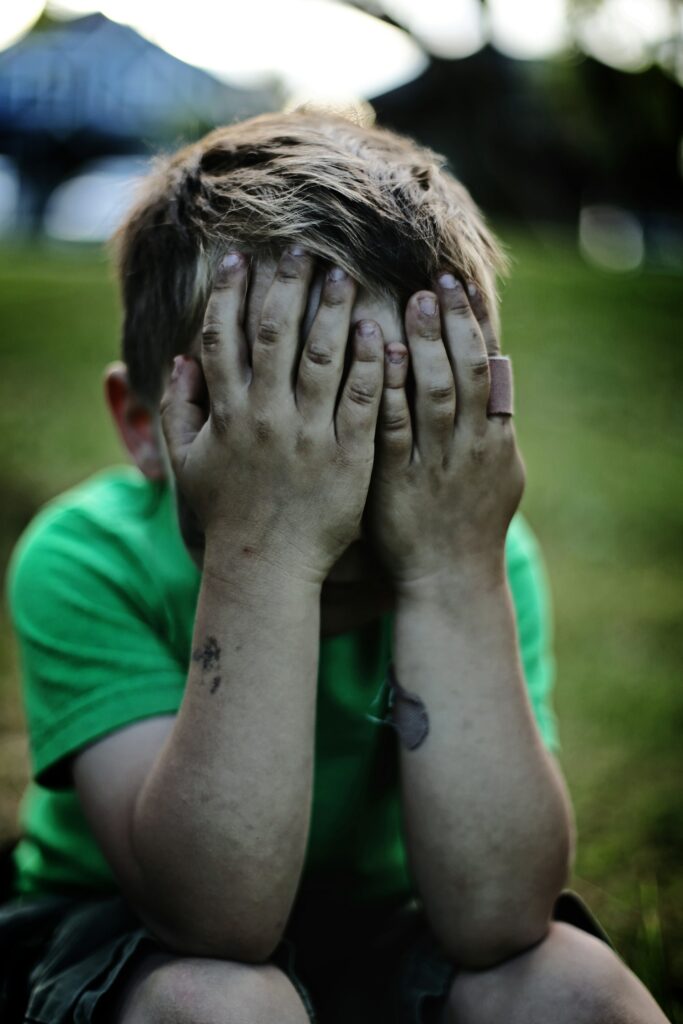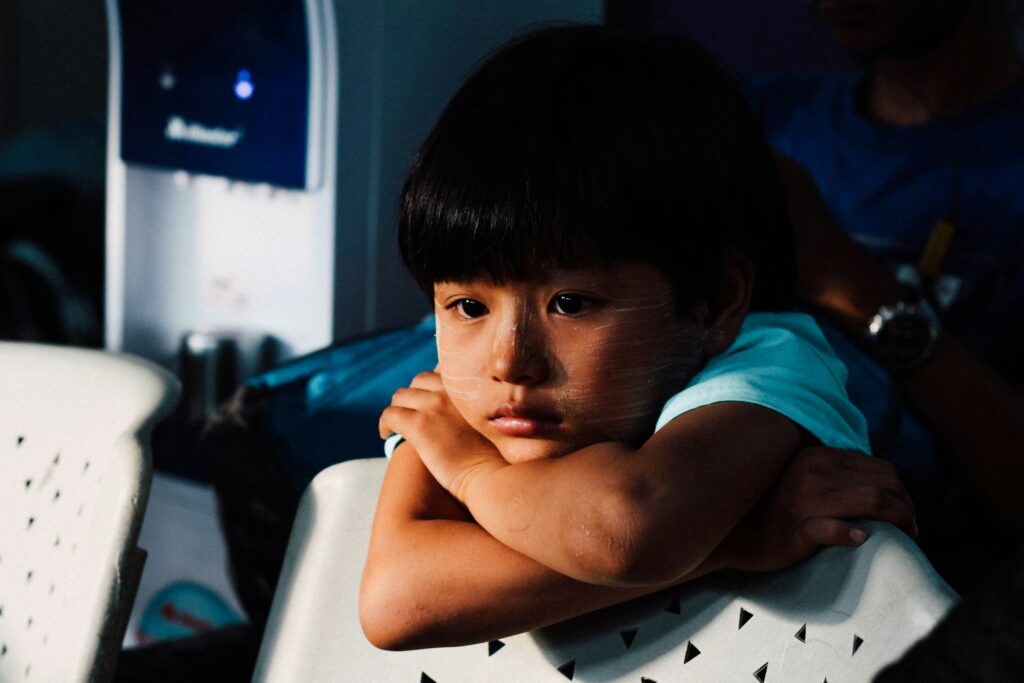What is Regressive Autism?

Featured image by Shravan K Acharya on Unsplash
Regressive autism occurs when a child, after developing typically, loses previously acquired skills such as language and social abilities, usually between 15-30 months. The cause is unclear, possibly involving genetic and environmental factors. Early intervention with therapies like ABA can help children regain lost skills and improve outcomes.
What exactly is regressive autism?
Regressive autism, or autism with regression, is a condition where a child who has been developing typically begins to lose acquired skills, such as language, social interaction, or motor abilities, usually between 15 and 30 months of age. Before regression, the child may show typical milestones like speaking words, making eye contact, and engaging socially. However, over time, these abilities diminish or disappear. The causes are not fully understood but may involve genetic, environmental, and immune-related factors. Regressive autism differs from early-onset autism, where developmental delays are present from birth. Early intervention therapies can help improve long-term outcomes.
What’s the difference between autism spectrum disorder and regressive autism?

Photo by Alexander Grey on Unsplash
The major difference between Autism Spectrum Disorder (ASD) and regressive autism lies in the onset and progression of symptoms.
In ASD, symptoms such as difficulties with communication, social interaction, and repetitive behaviours typically emerge before age three, and developmental delays are usually noticeable from infancy. Children with ASD may not meet early developmental milestones like talking or making eye contact or showing signs of the condition from a very young age.
Regressive autism, however, is a specific subtype of ASD where a child initially develops typically, acquiring skills like speaking, making eye contact, and socializing. Around 15 to 30 months of age, the child suddenly loses these abilities, entering a period of noticeable regression. This loss of skills sets regressive autism apart from early-onset ASD.
While both are on the autism spectrum, the primary distinction is that regressive autism involves a loss of previously acquired skills after a period of normal development, while ASD symptoms typically present from early childhood without regression.
What are the causes of regressive autism?
The exact causes of regressive autism are still unclear, but it likely involves a combination of genetic, environmental, and immune-related factors.
- Genetic predisposition: Certain genetic mutations and syndromes (such as Rett syndrome or Fragile X syndrome) have been linked to autism, including regressive types. A family history of autism or other neurological disorders may increase the risk.
- Environmental factors: Exposure to environmental toxins, prenatal complications, and maternal infections during pregnancy are being explored as potential contributors to regressive autism. These factors may interact with genetic predispositions.
- Immune dysfunction: Some studies suggest that children with regressive autism may have abnormal immune responses, including autoimmune conditions where the body’s immune system attacks its own tissues, potentially affecting brain development.
- Neurological and metabolic factors: Issues like mitochondrial dysfunction, abnormal brain connectivity, or changes in gut microbiota may also contribute to regression.

Photo by Jordan Whitt on Unsplash
What are the signs of regressive autism?
Some common signs include:
- Loss of language skills: A child who previously used words or phrases may suddenly stop speaking or significantly reduce their vocabulary. They may lose the ability to form sentences or communicate effectively.
- Diminished social interaction: Children may withdraw from social engagement, lose interest in playing with others, avoid eye contact, and stop responding to their names. They might become less interested in affection or physical touch.
- Loss of play skills: A child who once enjoyed playing with toys or engaging in pretend play may lose interest or stop using toys in a creative way.
- Repetitive behaviours: Increased repetitive actions, such as hand-flapping, spinning objects, rocking, or lining up toys, may become more noticeable during or after regression.
- Emotional and behavioural changes: Increased irritability, mood swings, aggression, or unexplained distress might appear. Children may also develop anxiety or become more sensitive to sensory stimuli like loud noises or bright lights.
- Motor skill regression: Some children may experience a decline in motor skills, such as difficulty with balance, walking, or other physical activities they previously managed

How is regressive autism diagnosed?
Regressive autism is diagnosed through a comprehensive evaluation that includes observing the child’s behavior, developmental history, and input from caregivers. Since there is no specific medical test for autism, the diagnosis is primarily clinical, based on specific criteria and detailed assessments. The process usually involves the following steps:
- Developmental screening: Pediatricians typically begin with developmental screening to check if a child is reaching age-appropriate milestones. If delays or regressions are noted, a more thorough evaluation is recommended.
- Detailed medical history: The healthcare provider will gather a detailed medical and family history, focusing on the child’s early development, when the regression occurred, and which skills were lost.
- Behavioural assessment: Specialists, such as developmental paediatricians, neurologists, or psychologists, conduct a comprehensive evaluation using standardized tools like the Autism Diagnostic Observation Schedule (ADOS) and the Autism Diagnostic Interview-Revised (ADI-R). These tools assess social interaction, communication, and repetitive behaviours.
- Ruling out other conditions: Additional tests like genetic screening, metabolic tests, and neurological exams may be performed to rule out other conditions that can cause regression, such as Rett syndrome, Fragile X syndrome, or epilepsy.
- Collaboration with caregivers: Parents or caregivers provide crucial observations about the child’s behaviour and any changes noticed over time.
Early diagnosis of regressive autism is vital for effective intervention and support, helping children regain lost skills and develop new ones.

Photo by Ksenia Makagonova on Unsplash
Can regressive autism be reversed?
Regressive autism cannot be fully reversed, but early intervention can lead to significant improvements. While there’s no cure, therapies like Applied Behavior Analysis (ABA), speech therapy, and occupational therapy can help children regain lost skills and develop new ones. Progress depends on the child and how early treatment begins. Some children experience substantial gains in communication and social skills, while others may continue to face challenges. Managing related conditions like anxiety or sensory issues can also enhance overall well-being. Though complete reversal is unlikely, a tailored approach can greatly improve a child’s ability to function and thrive in daily life.
How is regressive autism treated?
Treatment for regressive autism focuses on helping children regain lost skills and develop new abilities through early and intensive interventions. There is no cure, but several therapies can improve communication, social interactions, and behaviour.

Photo by Chinh Le Duc on Unsplash
Common treatments include:
- Applied Behavior Analysis (ABA): ABA is a widely used therapy that encourages positive behaviours and discourages negative ones through structured techniques. It is highly individualized and aims to improve communication, social skills, and learning.
- Speech therapy: This helps children regain or develop communication skills, including both verbal and non-verbal techniques, such as sign language or picture communication systems.
- Occupational therapy: Occupational therapy focuses on improving fine motor skills, daily living tasks, and coping with sensory sensitivities, which are common in children with regressive autism.
- Social skills training: This helps children engage in appropriate social behaviours, such as making eye contact, playing with peers, and understanding social cues.
Conclusion
If you suspect your child is showing signs of regressive autism, don’t wait. Take our Autism test, then consult with your doctor by taking a screenshot so you have the language to advocate for the next steps; an early diagnosis and intervention can make a world of difference in your child’s growth. Take the first step today to empower their future development




